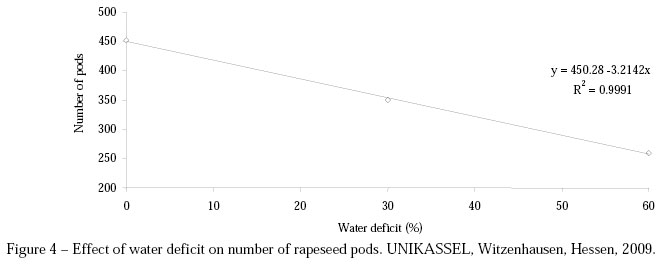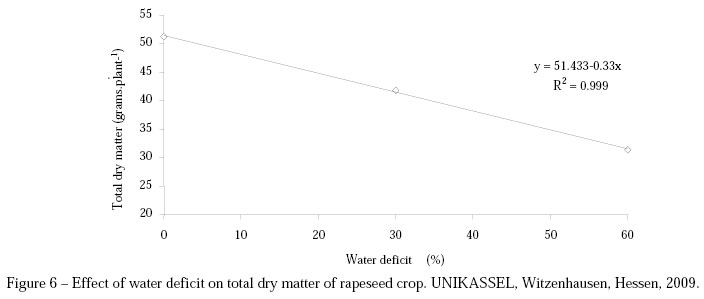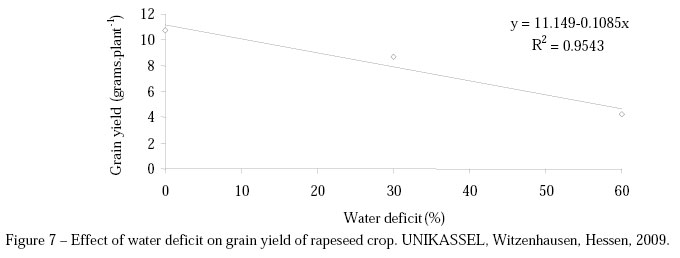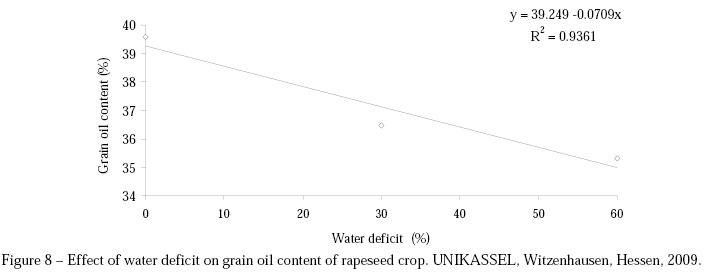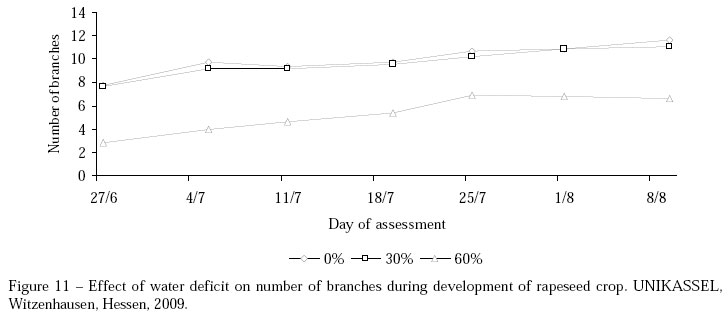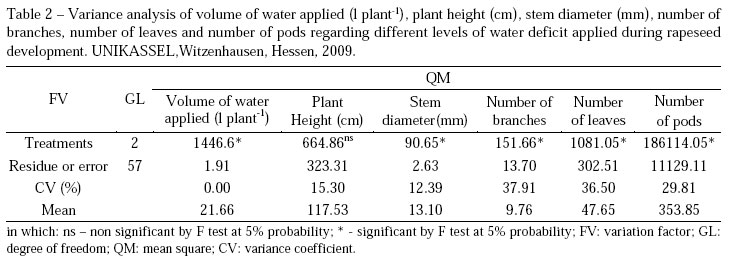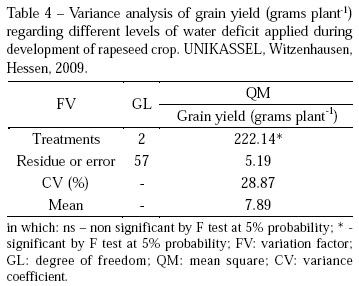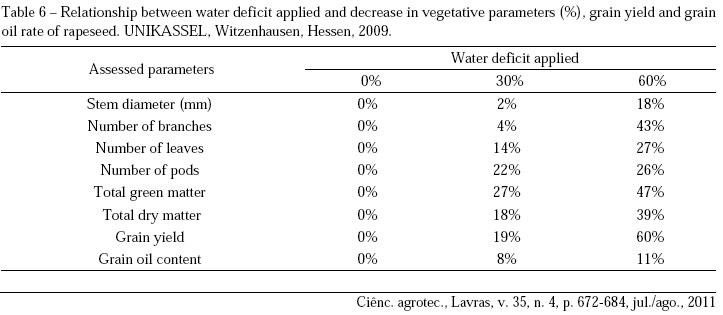Effects of different levels of water deficit applied during rapeseed crop development were assessed in a trial with metallic pots in greenhouse at the Department of Agricultural Engineering of Kassel University, Witzenhausen, Germany. A randomized block design was used with one cultivar (Ability Summer Rape) and three levels of water deficit (0, 30, and 60% of evapotranspiration) in three treatments and 20 replicates. Irrigation management was carried out through daily water balance, where ET = I - D; ET: evapotranspiration; I: irrigation; and D: drainage. The following evaluations were carried out weekly: stem diameter (mm); plant height (cm); number of leaves; number of branches and number of pods. At the end of the experiment, assessed total green matter (g plant-1), total dry matter (g plant-1), grain yield (g plant-1), grain protein content (%) and grain oil content (%) were also assessed. Data were submitted to variance analysis and the effect of the treatments was assessed by regression analysis. Results showed significant differences between the treatments in all analysed variables except for plant height and grain protein content, by test F at 5% probability. Factor of response ky, indicator of crop sensitivity to water deficit, was lower than one for all assessed variables. Grain yield showed the highest sensitivity to water deficit.
Water management; irrigation; water deficit




